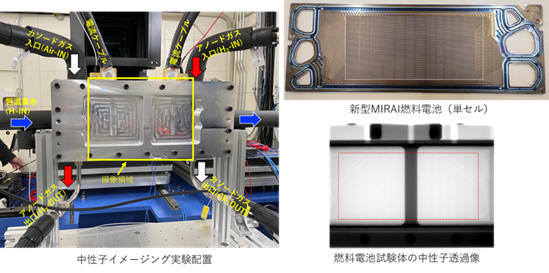2022-07-11 ペンシルベニア州立大学(PennState)
ペンシルベニア州立大学の研究者たちは、米国エネルギー省の助成金を受けて、全水性銅錯体をTRABで試験し、電池の性能と耐久性の両方を向上させることができると期待した。その結果は、Journal of Power Sources誌に掲載されました。
研究者らは、一連の単セル試験を通じて、出力とエネルギー密度の限界と、それらが電解質組成と放電電流によってどのように影響されるかを調べました。アンモニア濃度を上げることで、電池の出力密度は向上しましたが、エネルギー密度は低下しました。放電電流密度を上げると、エネルギー密度を大幅に落とすことなく、放電時の平均電力密度を上げることができました。銅の濃度を上げると,エネルギー密度とエネルギー効率の両方が向上したが,電力密度には大きな影響を与えなかった.電解液の組成にもよりますが、この電池は1平方センチメートルあたり最大30ミリワットの出力密度と、1リットルあたり最大2ワット時のエネルギー密度を実現しました。この結果は、膜を用いた低品位廃熱発電システムとしては、これまでで最高レベルの性能です。
<関連情報>
- https://www.psu.edu/news/earth-and-mineral-sciences/story/thermally-regenerative-battery-produces-ample-energy-using-low/
- https://www.sciencedirect.com/science/article/abs/pii/S0378775322003524
全水系銅熱再生アンモニア電池における出力とエネルギー容量のトレードオフ関係 Power and energy capacity tradeoffs in an all-aqueous copper thermally regenerative ammonia battery
Nicholas R.Cross,Matthew J.Rau,Serguei N.Lvov,Christopher A.GorskifBruce E.Logan,Derek M.Hall
Journal of Power Sources Available online:25 March 2022
DOI:https://doi.org/10.1016/j.jpowsour.2022.231339

Highlights
- •Theoretical maximum energy density of Cuaq-TRAB was 9.5 Wh L−1.
- •Higher ammonia concentration increased power density but decreased energy density.
- •Experimental energy density increased with copper concentration to 2.15 Wh L−1.
- •Highest thermal efficiency was 2.2% with 0.5 M Cu.
Abstract
Thermally regenerative ammonia batteries (TRABs) can provide energy storage and produce electrical power from low-grade waste heat instead of electricity. The use of all-aqueous copper-based electrolytes has recently produced higher power densities than those achieved using previous TRAB approaches based on reversible metal deposition and dissolution processes, but further gains are possible in power and energy density. We investigated the limitations of power and energy density and how they are impacted by the electrolyte composition and discharge currents. By increasing the ammonia concentration from 1 to 5 M, the power density of the battery increased from 11.2 to 28.5 mW cm−2, but the energy density decreased from 0.56 to 0.31 Wh L−1. Increasing discharge current densities from 4 to 12.5 mA cm−2 increased the average power density during discharge from 2.4 to 5.9 mW cm−2 without appreciable losses in energy density. Increasing the copper concentration from 0.1 to 0.5 M increased both energy density to 2.15 Wh L−1 and energy efficiency to 2.2% but did not substantially impact the power density. These results represent the highest performance metrics achieved for a low-grade waste heat to electricity system.




